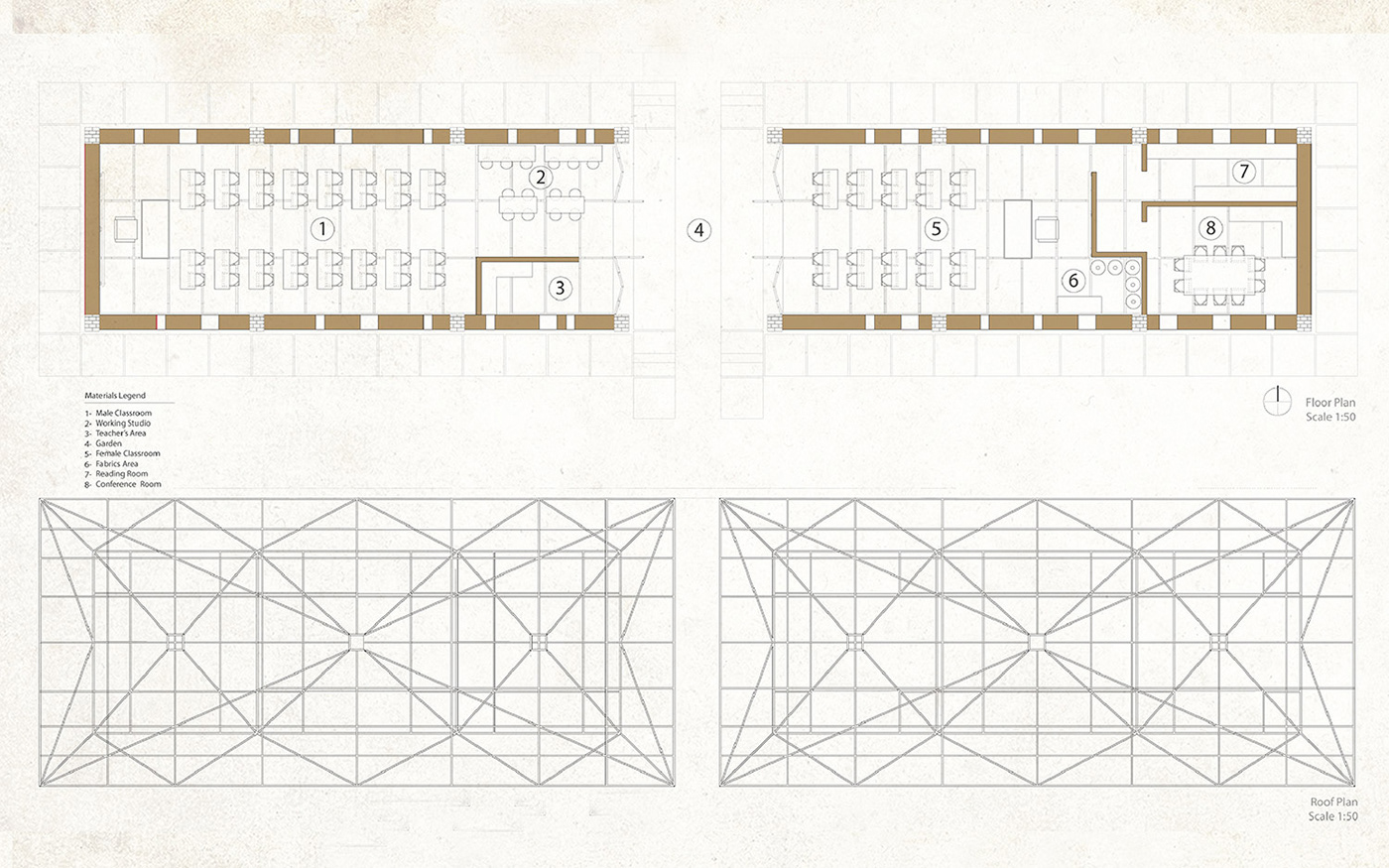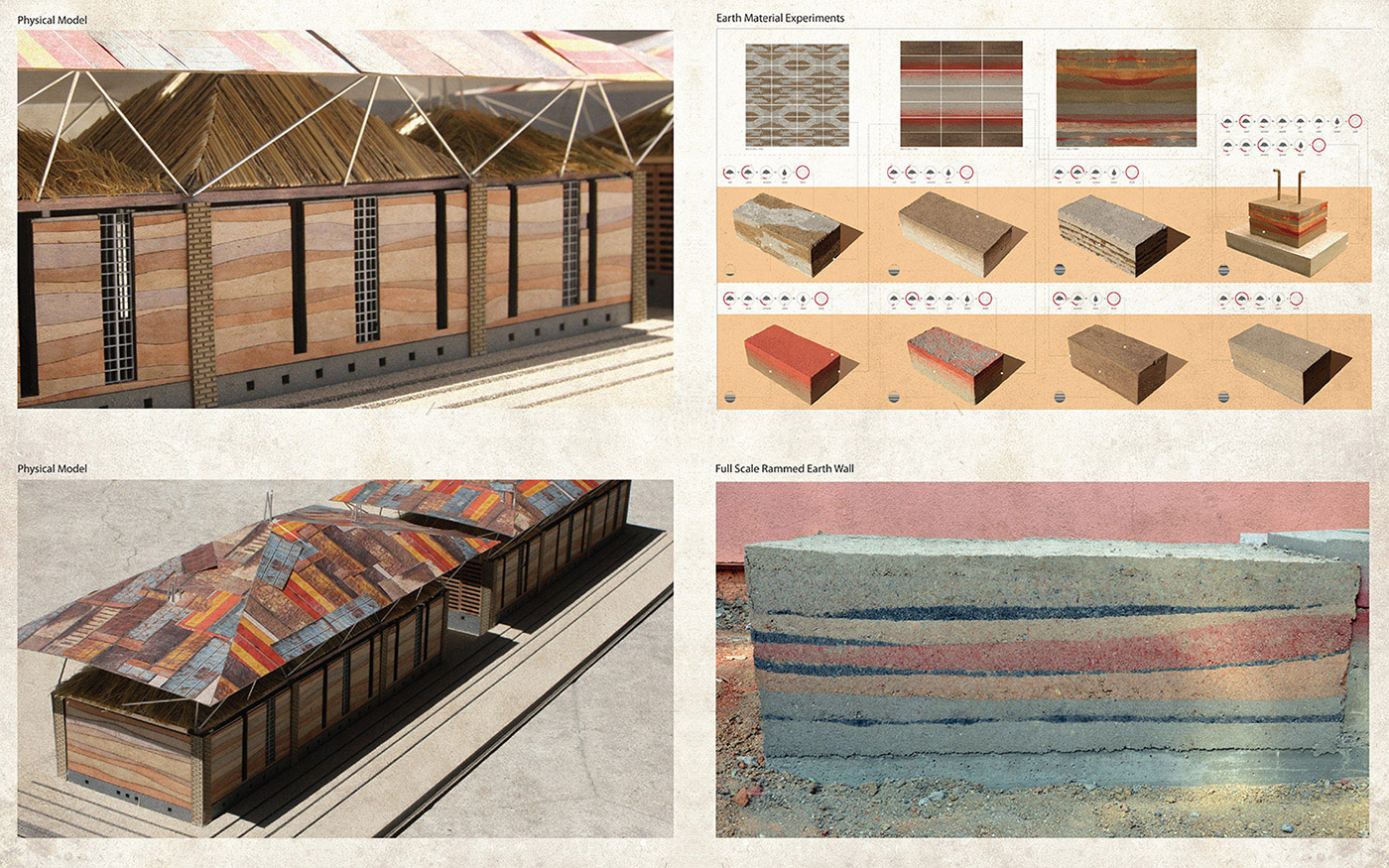BAATT PROJECT
BUILDING AS A TEACHING TOOL
Darfur Refugee School
Abeche, Chad, Africa
Abeche, Chad, Africa
Project by: Artur Nesterenko
Builder: BAATT NON-PROFIT CORPORATION
School for Darfurian Refugees: Building as a Teaching Tool
This project began with a study of material and human resources. Through an examination of indigenous building practices of Sub-Saharan Africa, a material palette was created. This included a family of earth construction techniques such as compressed mud bricks, rammed earth, thatch roofing, recycled metals, and minimal amounts of concrete, and steel work.
The process of developing a design that would be transmitted to a local population on the ground in Chad involved the alternating process of full scale materials testing with designing through scalar models and drawings. A sequence of brick and rammed earth studies informed the design of the school. A non-verbal pictorial construction manual complemented the drawings as a communication tool.
Building as a Teaching Tool
The Vocational Academy Building Project serves as a classroom space and a learning tool for matriculating students. In addition to housing classrooms for teaching reading and writing subjects, its construction is meant to serve as a practicum in sustainable building practices. Students enrolled in the program will participate on building teams to erect portions of the structure.
It is a building that combines indigenous building practices with state-of-the-art sustainable ethics. A simple rectangular open floor plan accommodates approximately 80 students (40 male and 40 female students). It employs a double roof structure with a thatch pyramidal roof that is covered with a second metal roof. The large metal roof canopy acts as a shade device to protect the interior from the intense heat.
The main structure is made of compressed mud bricks using a compression machine with a hand lever. There is a minimal amount of concrete and steel rebars needed for beam construction. The infill walls between the columns are non-structural rammed earth that is made of soil, and a small amount of cement. These walls are ventilated with fiber cement cylindrical tiles that may be made by the students on the site.
This single volume building is designed as one classroom space, and is intended to accommodate one gender. It is anticipated that two volumes will be built, along with smaller open-air canopies that serve as shade devices, lunch areas, and prayer spaces. Additionally, composting toilet structures will be built on the site.
This building acts as a tool by which students will learn sustainable building practices. This is a prototype structure that may be duplicated and adapted to many other sites in the Darfur region as repatriation takes place. Student/builders of the school will acquire skills such as brick making, rammed earth construction, thatch and metal roofing, installing composting toilets, and water management and conservation. These skills will be the foundation to entrepreneurial ventures as resettlements begin to take place.
Winner of ACSA Being Resourceful Competition
http://www.archive100.org/users/jcentuori/project/1413
School for Darfurian Refugees: Building as a Teaching Tool
This project began with a study of material and human resources. Through an examination of indigenous building practices of Sub-Saharan Africa, a material palette was created. This included a family of earth construction techniques such as compressed mud bricks, rammed earth, thatch roofing, recycled metals, and minimal amounts of concrete, and steel work.
The process of developing a design that would be transmitted to a local population on the ground in Chad involved the alternating process of full scale materials testing with designing through scalar models and drawings. A sequence of brick and rammed earth studies informed the design of the school. A non-verbal pictorial construction manual complemented the drawings as a communication tool.
Building as a Teaching Tool
The Vocational Academy Building Project serves as a classroom space and a learning tool for matriculating students. In addition to housing classrooms for teaching reading and writing subjects, its construction is meant to serve as a practicum in sustainable building practices. Students enrolled in the program will participate on building teams to erect portions of the structure.
It is a building that combines indigenous building practices with state-of-the-art sustainable ethics. A simple rectangular open floor plan accommodates approximately 80 students (40 male and 40 female students). It employs a double roof structure with a thatch pyramidal roof that is covered with a second metal roof. The large metal roof canopy acts as a shade device to protect the interior from the intense heat.
The main structure is made of compressed mud bricks using a compression machine with a hand lever. There is a minimal amount of concrete and steel rebars needed for beam construction. The infill walls between the columns are non-structural rammed earth that is made of soil, and a small amount of cement. These walls are ventilated with fiber cement cylindrical tiles that may be made by the students on the site.
This single volume building is designed as one classroom space, and is intended to accommodate one gender. It is anticipated that two volumes will be built, along with smaller open-air canopies that serve as shade devices, lunch areas, and prayer spaces. Additionally, composting toilet structures will be built on the site.
This building acts as a tool by which students will learn sustainable building practices. This is a prototype structure that may be duplicated and adapted to many other sites in the Darfur region as repatriation takes place. Student/builders of the school will acquire skills such as brick making, rammed earth construction, thatch and metal roofing, installing composting toilets, and water management and conservation. These skills will be the foundation to entrepreneurial ventures as resettlements begin to take place.
Winner of ACSA Being Resourceful Competition
http://www.archive100.org/users/jcentuori/project/1413
Winner of 2012 AIA 2x8 Competition
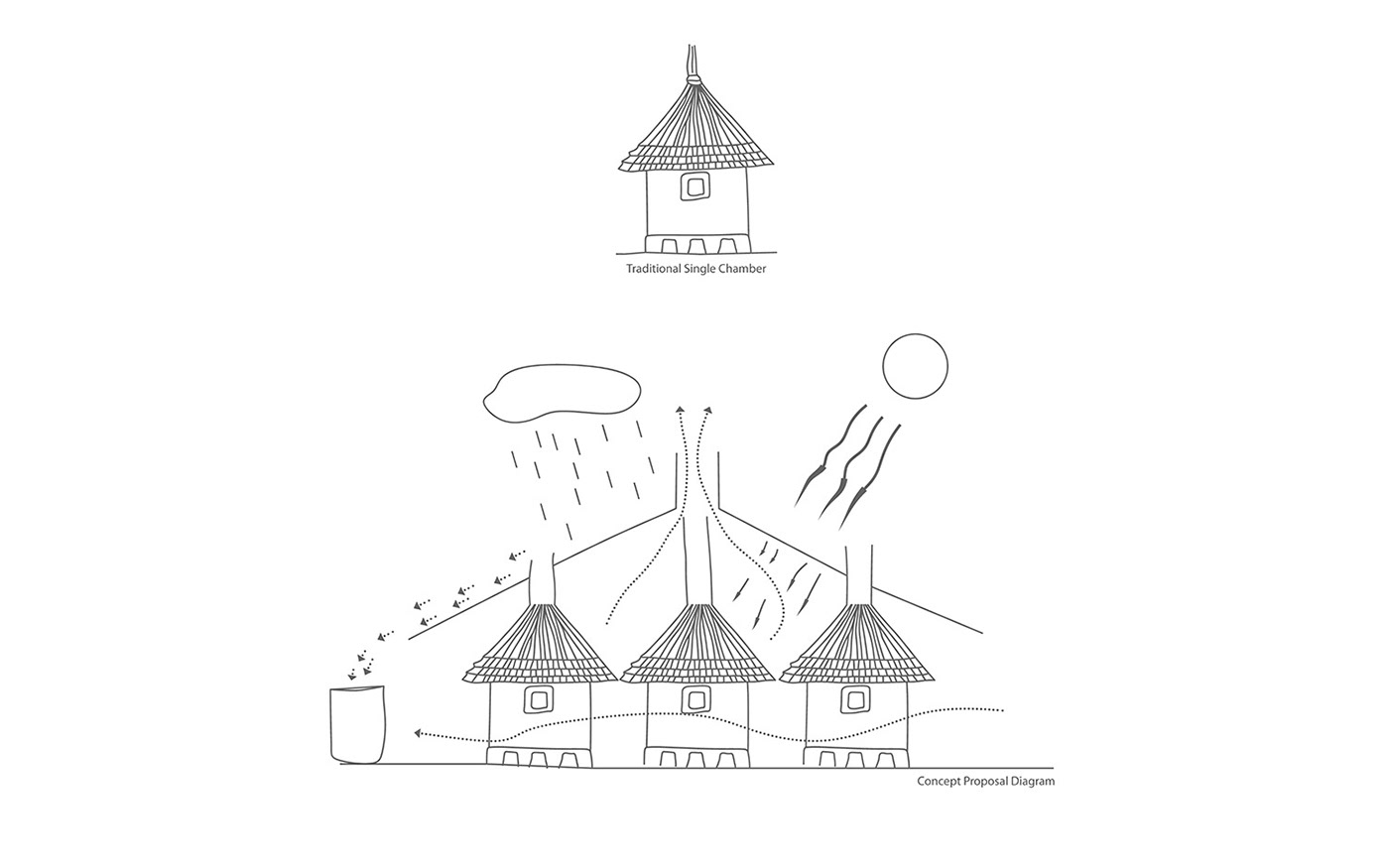
CONCEPT DIAGRAM (INSPIRATION FROM TRADITIONAL ARCHITECTURE IN ABECHE, AFRICA)
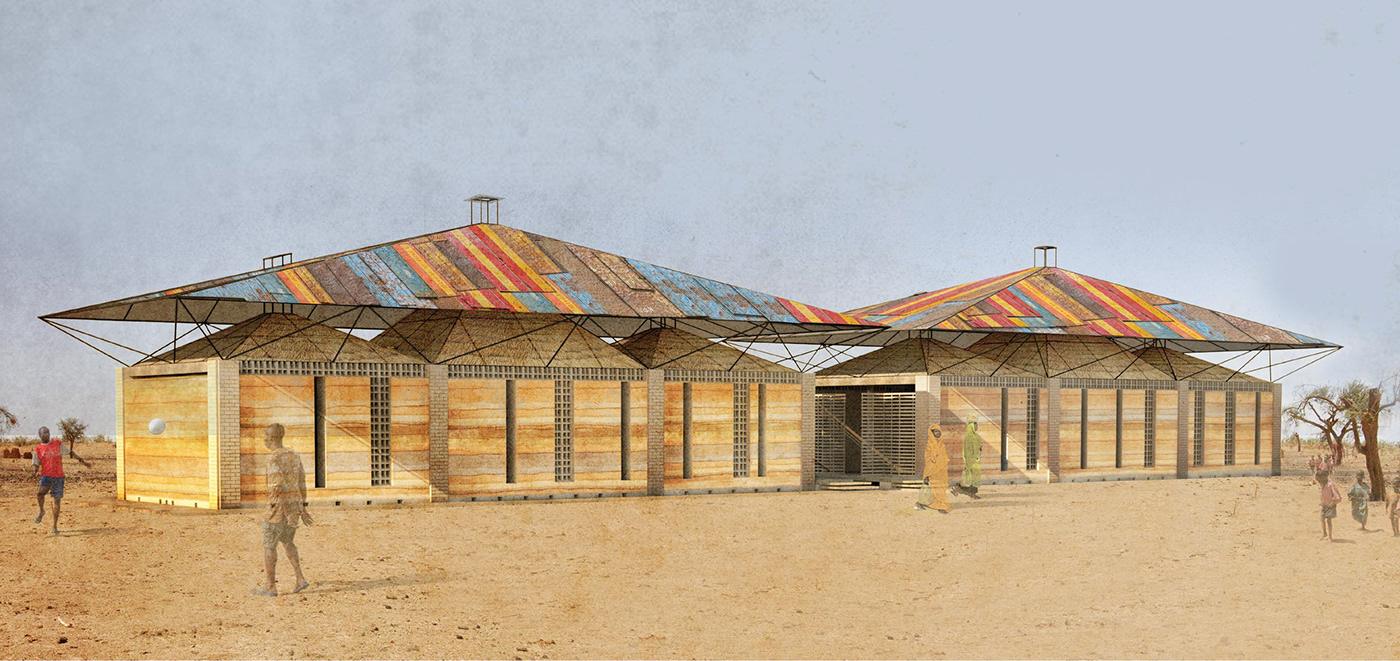
MAIN RENDERING OF THE SCHOOL (RHINO MODEL, PHOTOSHOP, MAXWELL RENDER)

HAND DRAWING (DIAGRAM OF ALL THE SYSTEMS THAT ARE INTEGRATED INTO THE BUILDING)
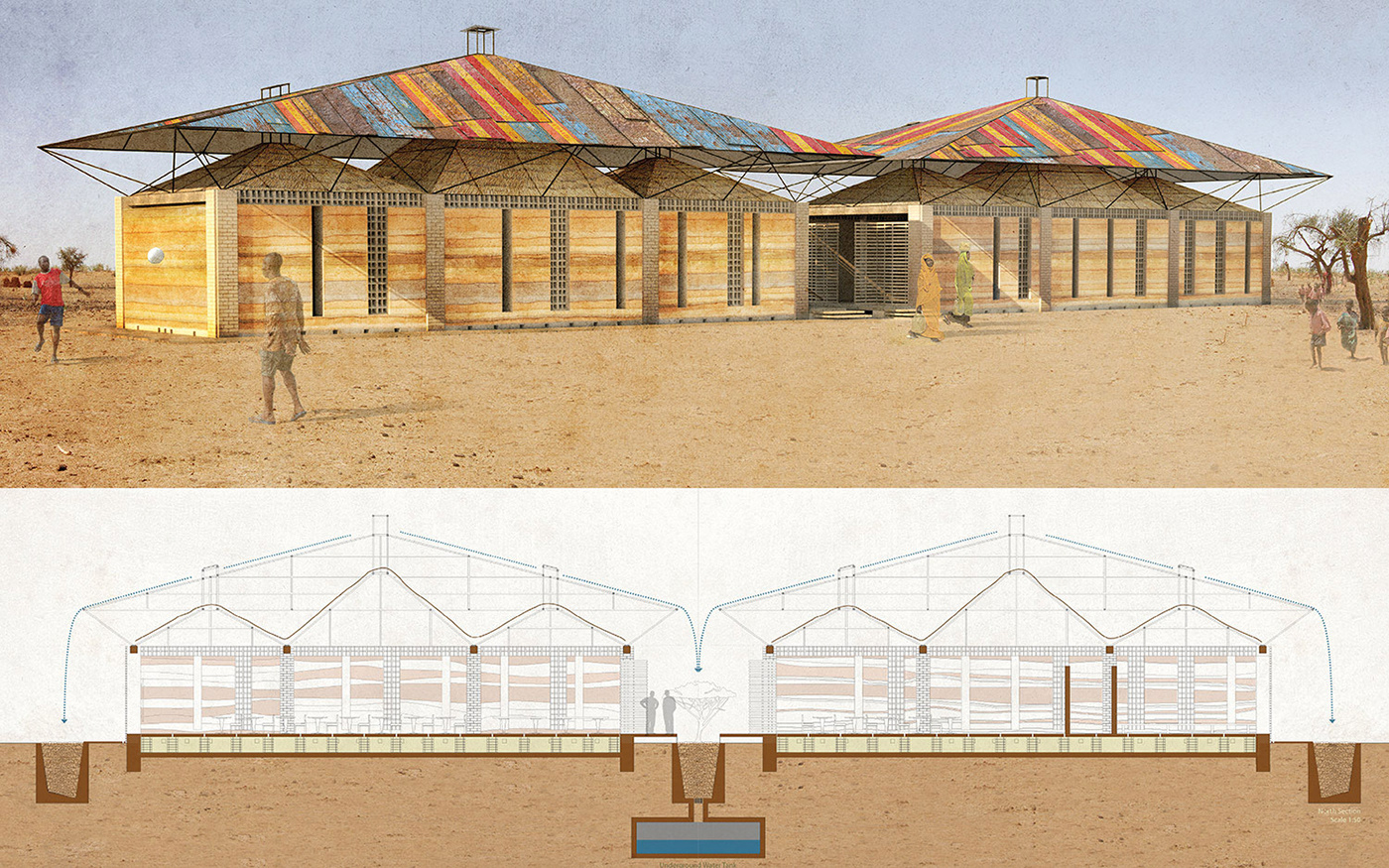
SECTION

SUN PATH DIAGRAM OF ABECHE, CHAD, AFRICA
